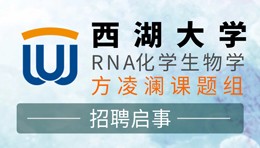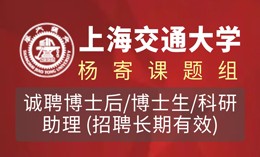当前位置:
X-MOL 学术
›
Water Res.
›
论文详情
Our official English website, www.x-mol.net, welcomes your
feedback! (Note: you will need to create a separate account there.)
Regulation mechanism of optimal bubble diameter for ozone wastewater treatment
Water Research ( IF 11.4 ) Pub Date : 2024-11-24 , DOI: 10.1016/j.watres.2024.122852 Xiemin Liu, Jin Jin, Yu Gao, Zheng Zhou, Feng Zhang, Jiao Geng
Water Research ( IF 11.4 ) Pub Date : 2024-11-24 , DOI: 10.1016/j.watres.2024.122852 Xiemin Liu, Jin Jin, Yu Gao, Zheng Zhou, Feng Zhang, Jiao Geng

|
Efforts have been made to enhance ozone utilization efficiency and reduce energy costs in ozone-aerated wastewater treatment. Microbubbles, characterized by their large interfacial area and efficient gas-liquid mass transfer, are extensively used to boost ozone utilization. However, generating microbubbles demands significant energy, and their actual efficiency requires careful evaluation due to the absence of universal strategies for designing microbubbles with optimal performance. This study established an integrated mathematical model for ozone oxidation in wastewater treatment, based on comprehensive ozone reaction kinetics, microbubble mass transfer control theory, and mass conservation equations for gas-liquid phase components. Simulation results showed a pollutant removal rate with a prediction error of less than 20 %, confirming the model's reliability. Further analysis revealed that although the initial mass transfer rate of 0.5 mm bubbles is lower than that of 0.1 mm bubbles, the total mass transfer quantity is reduced by only 8.7 %. This suggests that an optimal bubble diameter can balance mass transfer efficiency and energy consumption. Based on this finding, we integrated ozone production and bubble generation energy consumption to develop a regulation mechanism for optimizing bubble diameter, minimizing total energy consumption while meeting target removal rates. Results indicate that the optimal bubble diameter is closely related to water depth: as depth increases, the optimal bubble diameter also increases. At a depth of 2.1 meters, the optimized bubble diameter reduces energy consumption by 33.5 % and 16.2 % compared to millimeter-sized and 100-micron bubbles, respectively. Sensitivity analysis shows that total energy consumption is more sensitive to changes in specific ozone energy consumption, while variations in bubble generation energy remain relatively stable. These results underscore the feasibility of using the proposed model to guide energy-efficient bubble size selection.
中文翻译:

臭氧废水处理最佳气泡直径的调控机制
在臭氧曝气废水处理中,人们努力提高臭氧利用效率并降低能源成本。微气泡具有界面面积大和高效的气液传质的特点,被广泛用于提高臭氧利用率。然而,产生微气泡需要大量的能量,并且由于缺乏设计具有最佳性能的微气泡的通用策略,因此需要仔细评估其实际效率。本研究基于综合臭氧反应动力学、微气泡传质控制理论和气液相组分质量守恒方程,建立了废水处理中臭氧氧化的综合数学模型。仿真结果显示污染物去除率,预测误差小于 20%,证实了该模型的可靠性。进一步分析表明,尽管 0.5 mm 气泡的初始传质速率低于 0.1 mm 气泡,但总传质量仅减少了 8.7 %。这表明最佳气泡直径可以平衡传质效率和能耗。基于这一发现,我们将臭氧产生和气泡产生能耗相结合,开发了一种优化气泡直径的调节机制,在满足目标去除率的同时最大限度地减少总能耗。结果表明,最佳气泡直径与水深密切相关:随着深度的增加,最佳气泡直径也会增加。在 2.1 米的深度,优化的气泡直径与毫米和 100 微米的气泡相比,能耗分别降低了 33.5 % 和 16.2%。 敏感性分析表明,总能耗对特定臭氧能耗的变化更敏感,而气泡产生能量的变化保持相对稳定。这些结果强调了使用所提出的模型来指导节能气泡尺寸选择的可行性。
更新日期:2024-11-24
中文翻译:

臭氧废水处理最佳气泡直径的调控机制
在臭氧曝气废水处理中,人们努力提高臭氧利用效率并降低能源成本。微气泡具有界面面积大和高效的气液传质的特点,被广泛用于提高臭氧利用率。然而,产生微气泡需要大量的能量,并且由于缺乏设计具有最佳性能的微气泡的通用策略,因此需要仔细评估其实际效率。本研究基于综合臭氧反应动力学、微气泡传质控制理论和气液相组分质量守恒方程,建立了废水处理中臭氧氧化的综合数学模型。仿真结果显示污染物去除率,预测误差小于 20%,证实了该模型的可靠性。进一步分析表明,尽管 0.5 mm 气泡的初始传质速率低于 0.1 mm 气泡,但总传质量仅减少了 8.7 %。这表明最佳气泡直径可以平衡传质效率和能耗。基于这一发现,我们将臭氧产生和气泡产生能耗相结合,开发了一种优化气泡直径的调节机制,在满足目标去除率的同时最大限度地减少总能耗。结果表明,最佳气泡直径与水深密切相关:随着深度的增加,最佳气泡直径也会增加。在 2.1 米的深度,优化的气泡直径与毫米和 100 微米的气泡相比,能耗分别降低了 33.5 % 和 16.2%。 敏感性分析表明,总能耗对特定臭氧能耗的变化更敏感,而气泡产生能量的变化保持相对稳定。这些结果强调了使用所提出的模型来指导节能气泡尺寸选择的可行性。































 京公网安备 11010802027423号
京公网安备 11010802027423号